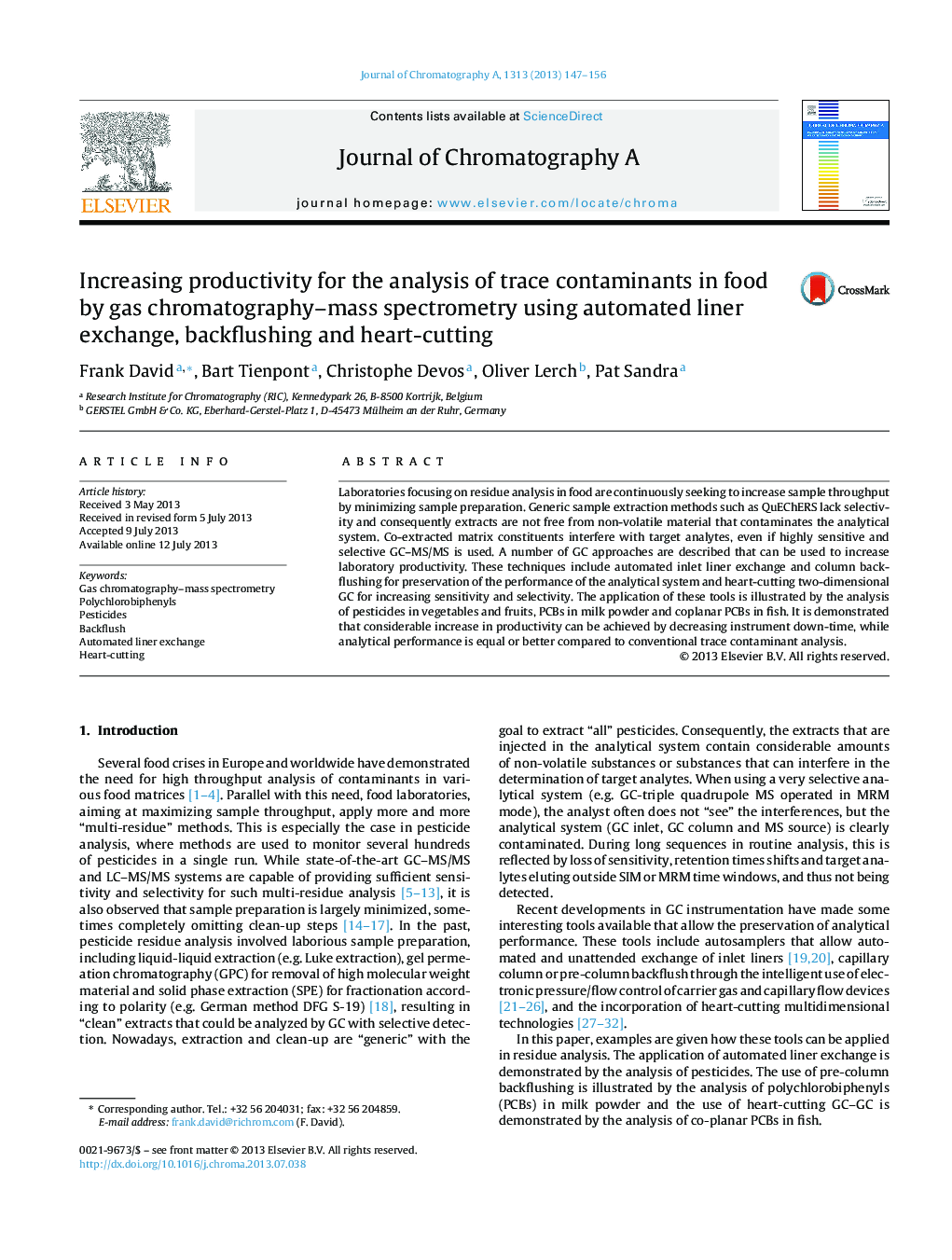| کد مقاله | کد نشریه | سال انتشار | مقاله انگلیسی | نسخه تمام متن |
|---|---|---|---|---|
| 1203411 | 1493613 | 2013 | 10 صفحه PDF | دانلود رایگان |

• Instrumental contamination due to minimized sample preparation is discussed.
• Automated liner exchange was tested in a routine environment.
• Pre-column backflushing was applied on fatty matrices.
• A two-dimensional GC–MS/MS method is presented for coplanar PCBs.
Laboratories focusing on residue analysis in food are continuously seeking to increase sample throughput by minimizing sample preparation. Generic sample extraction methods such as QuEChERS lack selectivity and consequently extracts are not free from non-volatile material that contaminates the analytical system. Co-extracted matrix constituents interfere with target analytes, even if highly sensitive and selective GC–MS/MS is used. A number of GC approaches are described that can be used to increase laboratory productivity. These techniques include automated inlet liner exchange and column backflushing for preservation of the performance of the analytical system and heart-cutting two-dimensional GC for increasing sensitivity and selectivity. The application of these tools is illustrated by the analysis of pesticides in vegetables and fruits, PCBs in milk powder and coplanar PCBs in fish. It is demonstrated that considerable increase in productivity can be achieved by decreasing instrument down-time, while analytical performance is equal or better compared to conventional trace contaminant analysis.
Journal: Journal of Chromatography A - Volume 1313, 25 October 2013, Pages 147–156